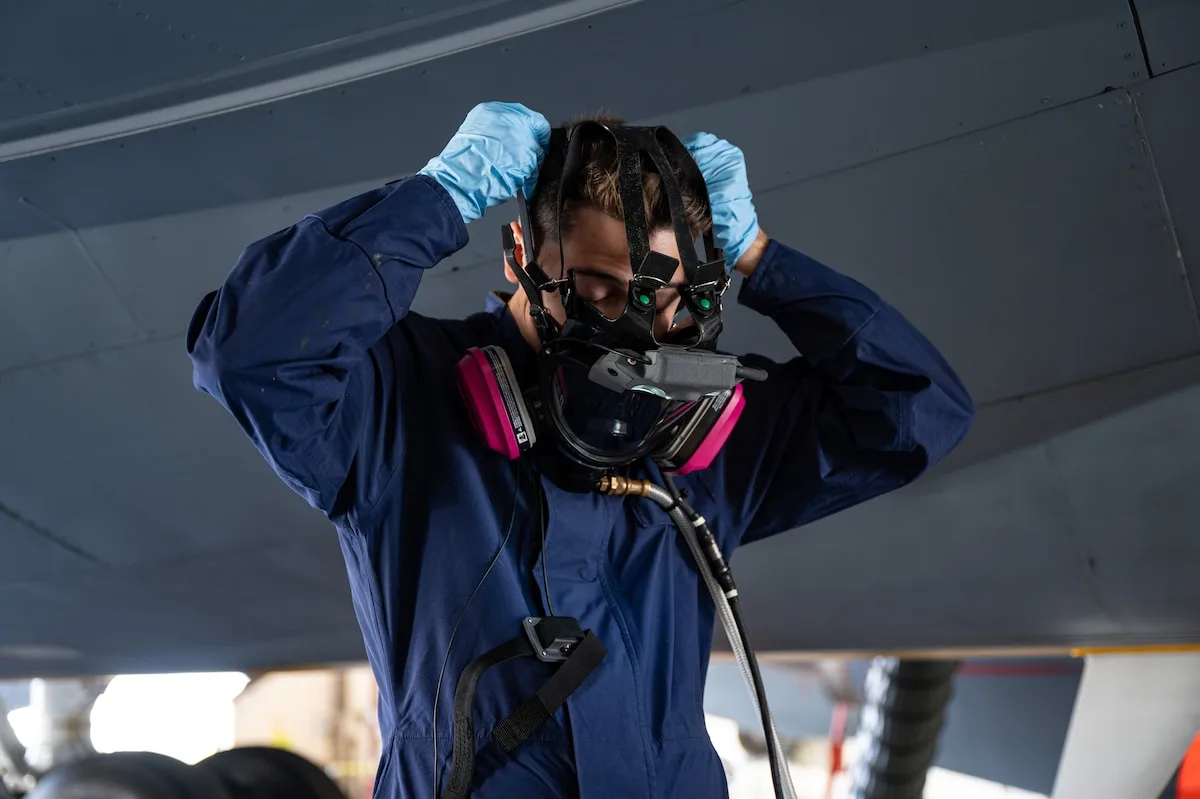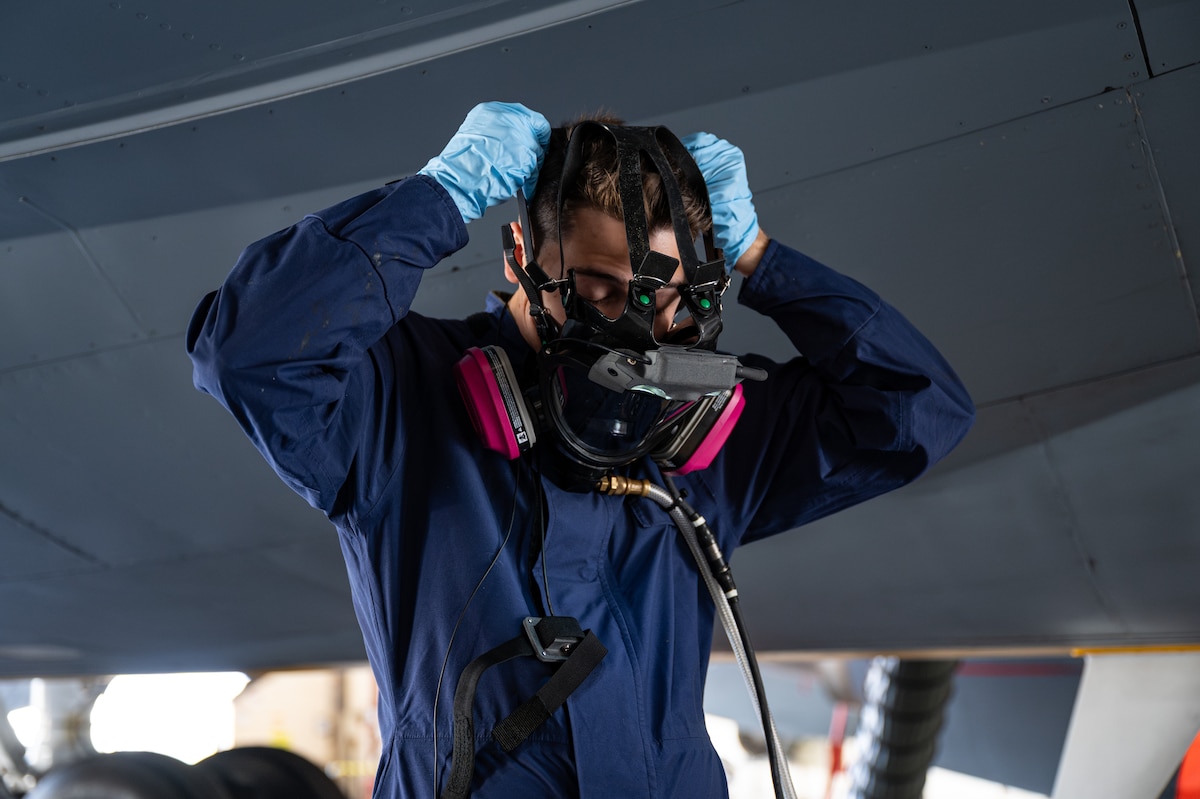Airman 1st Class Aidan Martínez
ROYAL AIR FORCE MILDENHALL, England — A new system called the Integrated Respirator Information System (IRIS) is changing how aircraft maintainers work in confined and hazardous spaces.The IRIS provides point-of-view video, two-way audio and a headlamp so maintainers outside confined spaces can monitor work in real time.The system was first developed in 2018 by Mia Tobitt, who worked on innovation projects, and a team of Airmen from the 100th Maintenance Squadron. The idea for the system was first developed by a team from 100th MXS and later advanced to compete in the 2019 Air Force’s Spark Tank innovation competition.
Though the IRIS did not place first in the Spark Tank competition, it earned enough support to have funding and begin development.
“Regardless of whether we were the first choice or not, we still won,” Tobitt said.
The project faced challenges, including years of testing to meet official safety standards. However, the rigorous certification process ensured the IRIS was safe for use in fuel tanks and other areas with explosive vapors.
The IRIS has the potential to save more than 35,000 work hours annually on KC-135 aircraft maintenance. Additionally, the system could return about 7,000 days of aircraft availability each year.It also reduces the number of times maintainers must re-enter tanks, improving safety and efficiency. In the future, the IRIS could link directly to the broad Air Force network to allow immediate emergency alerts and live technical support from engineers.Tobitt further explained that the IRIS has potential for use outside the world of aircraft maintenance. Confined space workers in civil engineering, fire protection and emergency services could benefit from the technology.
“Nothing’s too big,” said Tobitt. “If you’ve got an idea, talk to someone, have that conversation. If we hadn’t, this wouldn’t be here today.”
From small beginnings, to the demonstration held here at RAF Mildenhall, the IRIS project stands as a testament to what Airmen can achieve when they embody innovation.
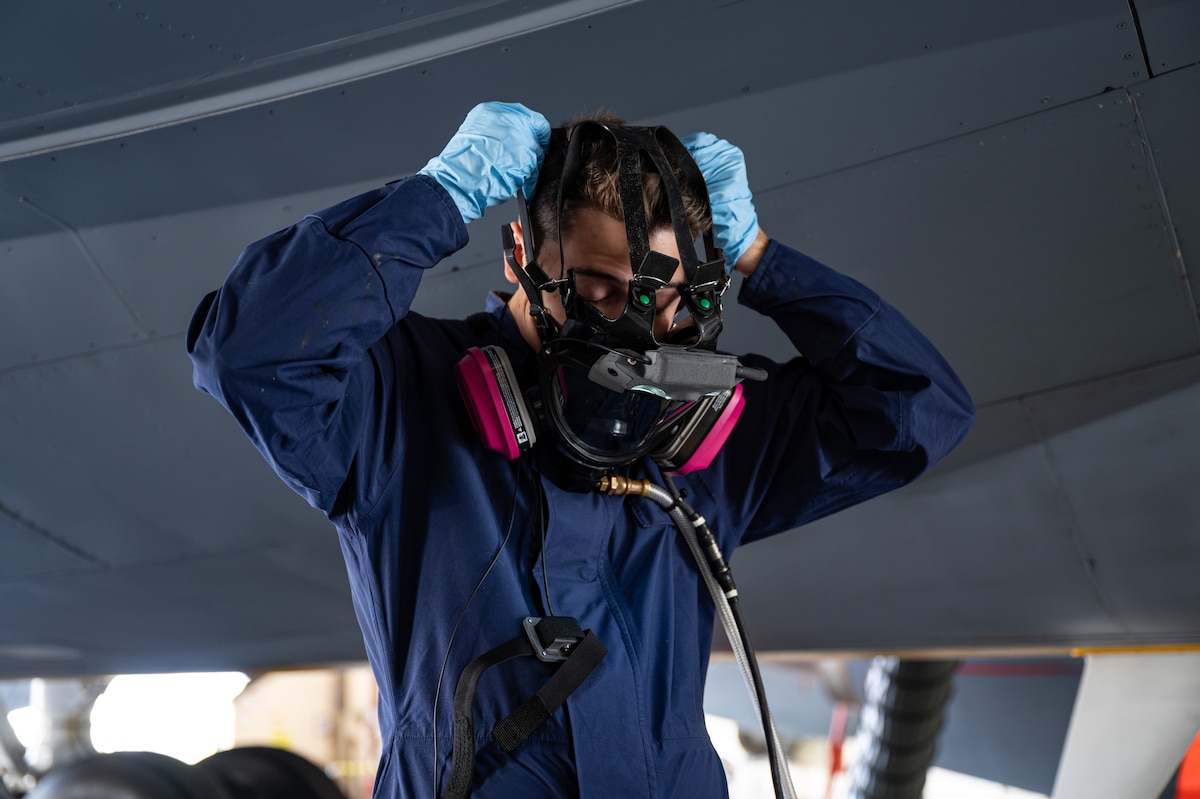 U.S. Air Force Airman 1st Class William Brice, 100th Maintenance Squadron, dons an Integrated Respirator Information System at RAF Mildenhall, England, Sept. 2, 2025. The IRIS provides point-of-view video, two-way audio and a headlamp so maintainers outside confined spaces can monitor work in real time. (U.S. Air Force photo by Airman 1st Class Aidan Martínez)
U.S. Air Force Airman 1st Class William Brice, 100th Maintenance Squadron, dons an Integrated Respirator Information System at RAF Mildenhall, England, Sept. 2, 2025. The IRIS provides point-of-view video, two-way audio and a headlamp so maintainers outside confined spaces can monitor work in real time. (U.S. Air Force photo by Airman 1st Class Aidan Martínez) 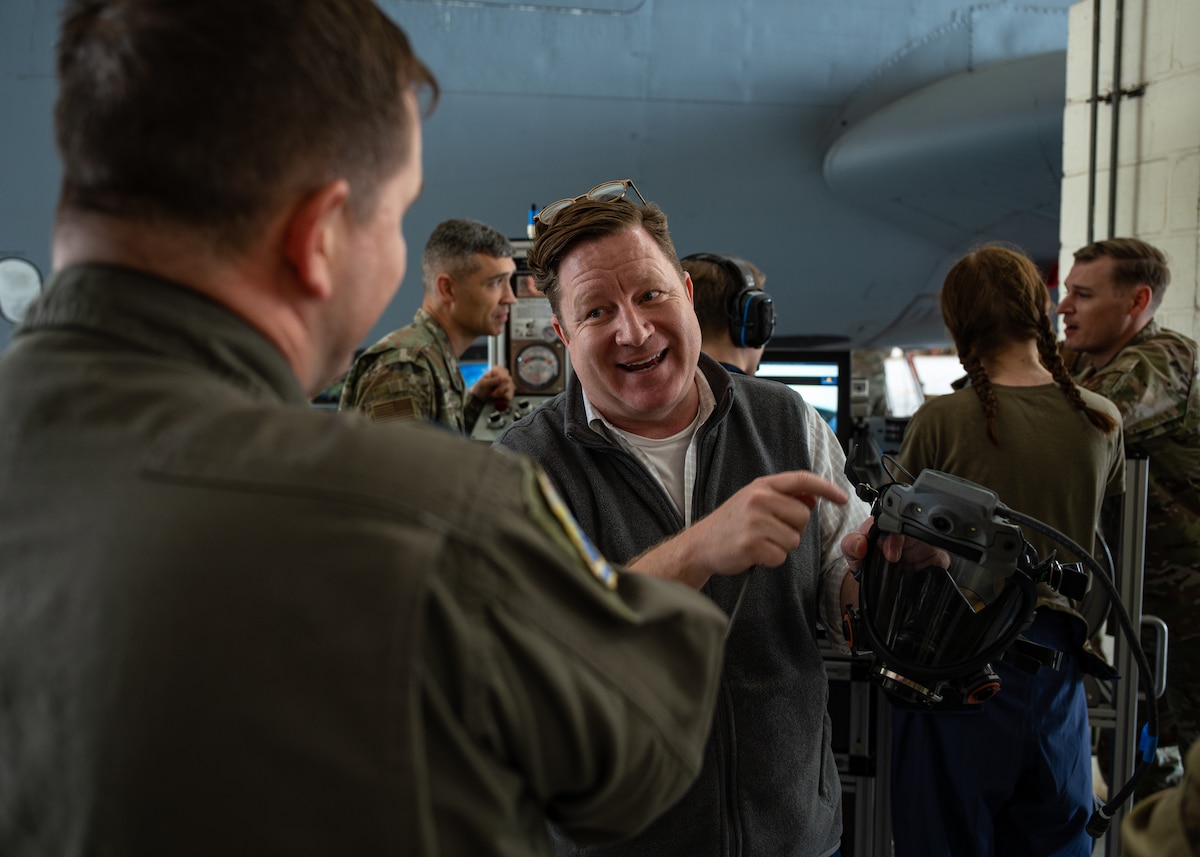 Chris McLennan, chief technology officer, showcases the mask portion of the Integrated Respirator Information System during a demonstration at RAF Mildenhall, England, Sept. 2, 2025. The idea for the system was first developed by a team from 100th MXS and later advanced to compete in the 2019 Air Force’s Spark Tank innovation competition. (U.S. Air Force photo by Airman 1st Class Aidan Martínez)
Chris McLennan, chief technology officer, showcases the mask portion of the Integrated Respirator Information System during a demonstration at RAF Mildenhall, England, Sept. 2, 2025. The idea for the system was first developed by a team from 100th MXS and later advanced to compete in the 2019 Air Force’s Spark Tank innovation competition. (U.S. Air Force photo by Airman 1st Class Aidan Martínez) 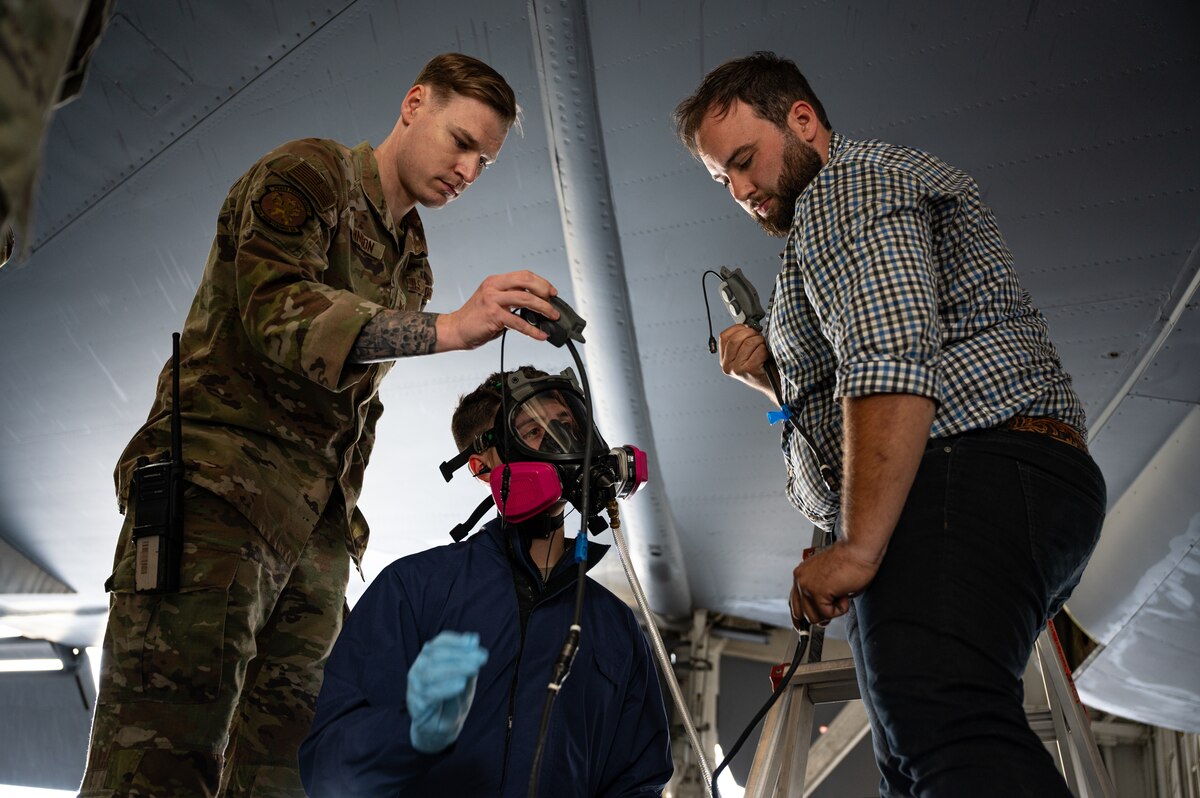 From left, U.S. Air Force Tech. Sgt. Jubal Johnson and Airman 1st Class William Brice, 100th Maintenance Squadron, and Alex Motz, software technician, prepare the Integrated Respirator Information System for a demonstration at RAF Mildenhall, England, Sept. 2, 2025. The IRIS has the potential to save more than 35,000 man hours annually on KC-135 aircraft maintenance. Additionally, the system could return about 7,000 days of aircraft availability each year. (U.S. Air Force photo by Airman 1st Class Aidan Martínez)
From left, U.S. Air Force Tech. Sgt. Jubal Johnson and Airman 1st Class William Brice, 100th Maintenance Squadron, and Alex Motz, software technician, prepare the Integrated Respirator Information System for a demonstration at RAF Mildenhall, England, Sept. 2, 2025. The IRIS has the potential to save more than 35,000 man hours annually on KC-135 aircraft maintenance. Additionally, the system could return about 7,000 days of aircraft availability each year. (U.S. Air Force photo by Airman 1st Class Aidan Martínez) 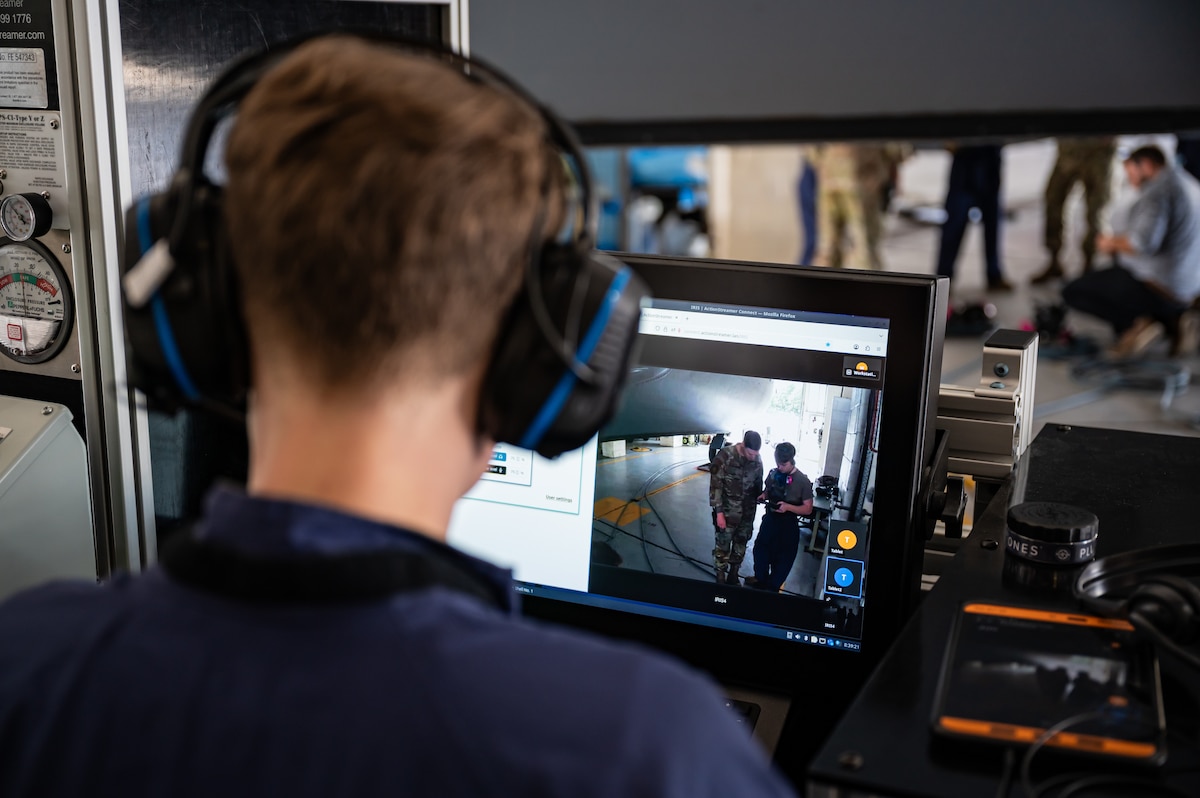 U.S. Air Force Senior Airman Hunter Holland, 100th Maintenance Squadron, monitors the live-feed from another Airman using the Integrated Respirator Information System at RAF Mildenhall, England, Sept. 2, 2025. The IRIS provides point-of-view video, two-way audio and a headlamp so maintainers outside confined spaces can monitor work in real time. (U.S. Air Force photo by Airman 1st Class Aidan Martínez)
U.S. Air Force Senior Airman Hunter Holland, 100th Maintenance Squadron, monitors the live-feed from another Airman using the Integrated Respirator Information System at RAF Mildenhall, England, Sept. 2, 2025. The IRIS provides point-of-view video, two-way audio and a headlamp so maintainers outside confined spaces can monitor work in real time. (U.S. Air Force photo by Airman 1st Class Aidan Martínez) 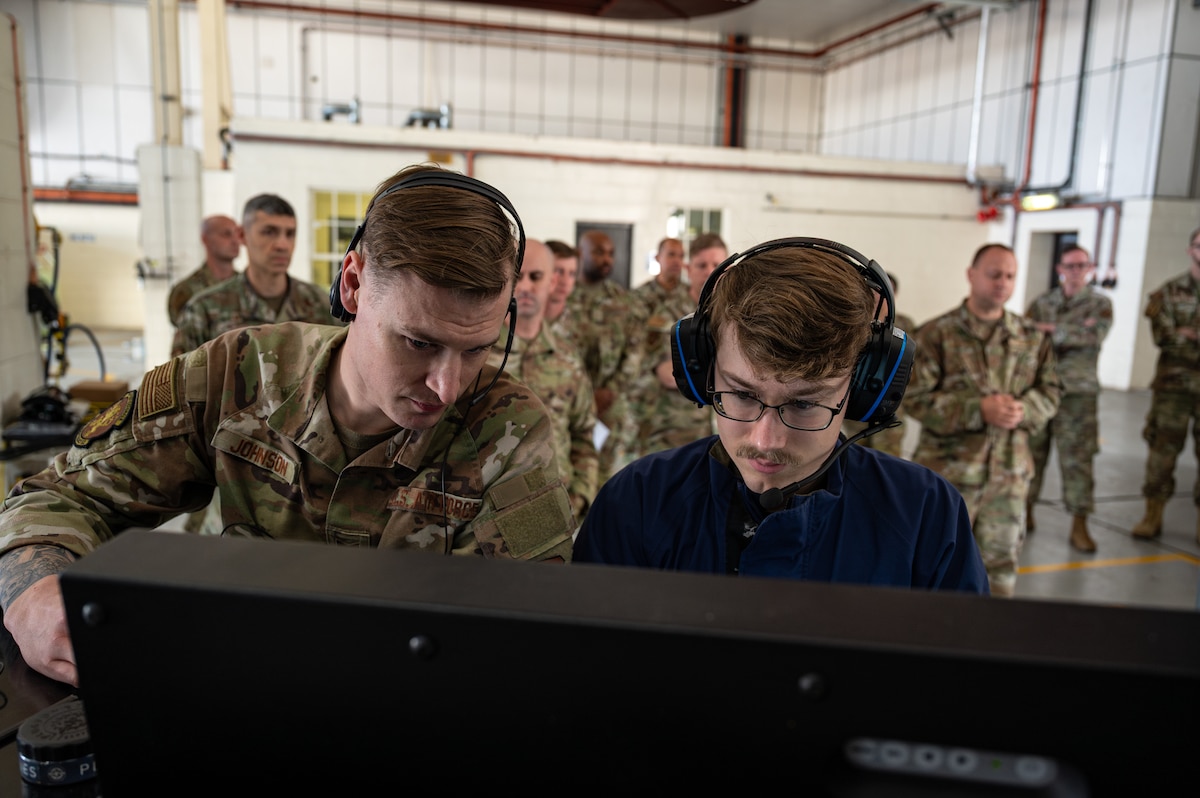 From left, U.S. Air Force Tech. Sgt. Jubal Johnson and Senior Airman Hunter Holland, both with the 100th Maintenance Squadron, monitor the Integrated Respirator Information System during a demonstration at RAF Mildenhall, England, Sept. 2, 2025. The IRIS can reduce the number of times maintainers must re-enter fuel tanks, improving safety and efficiency. (U.S. Air Force photo by Airman 1st Class Aidan Martínez)
From left, U.S. Air Force Tech. Sgt. Jubal Johnson and Senior Airman Hunter Holland, both with the 100th Maintenance Squadron, monitor the Integrated Respirator Information System during a demonstration at RAF Mildenhall, England, Sept. 2, 2025. The IRIS can reduce the number of times maintainers must re-enter fuel tanks, improving safety and efficiency. (U.S. Air Force photo by Airman 1st Class Aidan Martínez) 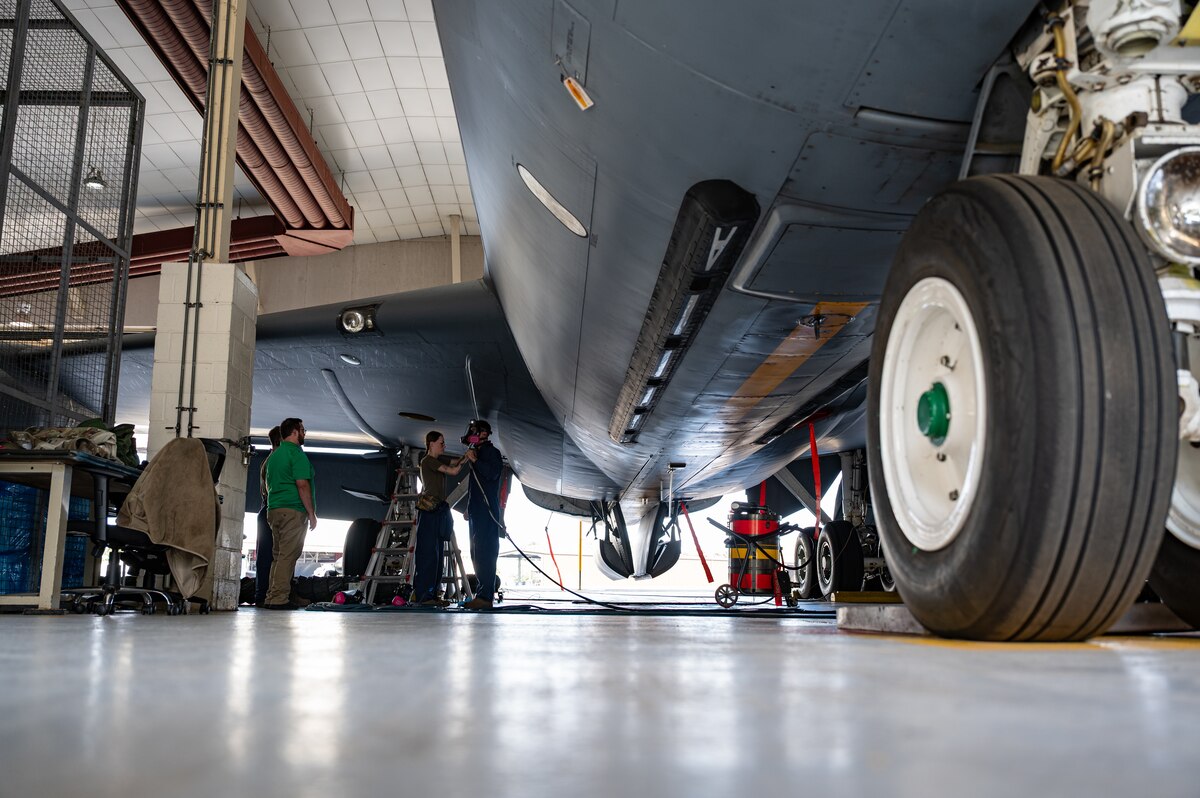 Personnel assigned to the 100th Maintenance Squadron prepare the new Integrated Respirator Information System for a demonstration at RAF Mildenhall, England, Sept. 2, 2025. The IRIS can reduce the number of times maintainers must re-enter fuel tanks, improving safety and efficiency. (U.S. Air Force photo by Airman 1st Class Aidan Martínez)
Personnel assigned to the 100th Maintenance Squadron prepare the new Integrated Respirator Information System for a demonstration at RAF Mildenhall, England, Sept. 2, 2025. The IRIS can reduce the number of times maintainers must re-enter fuel tanks, improving safety and efficiency. (U.S. Air Force photo by Airman 1st Class Aidan Martínez) 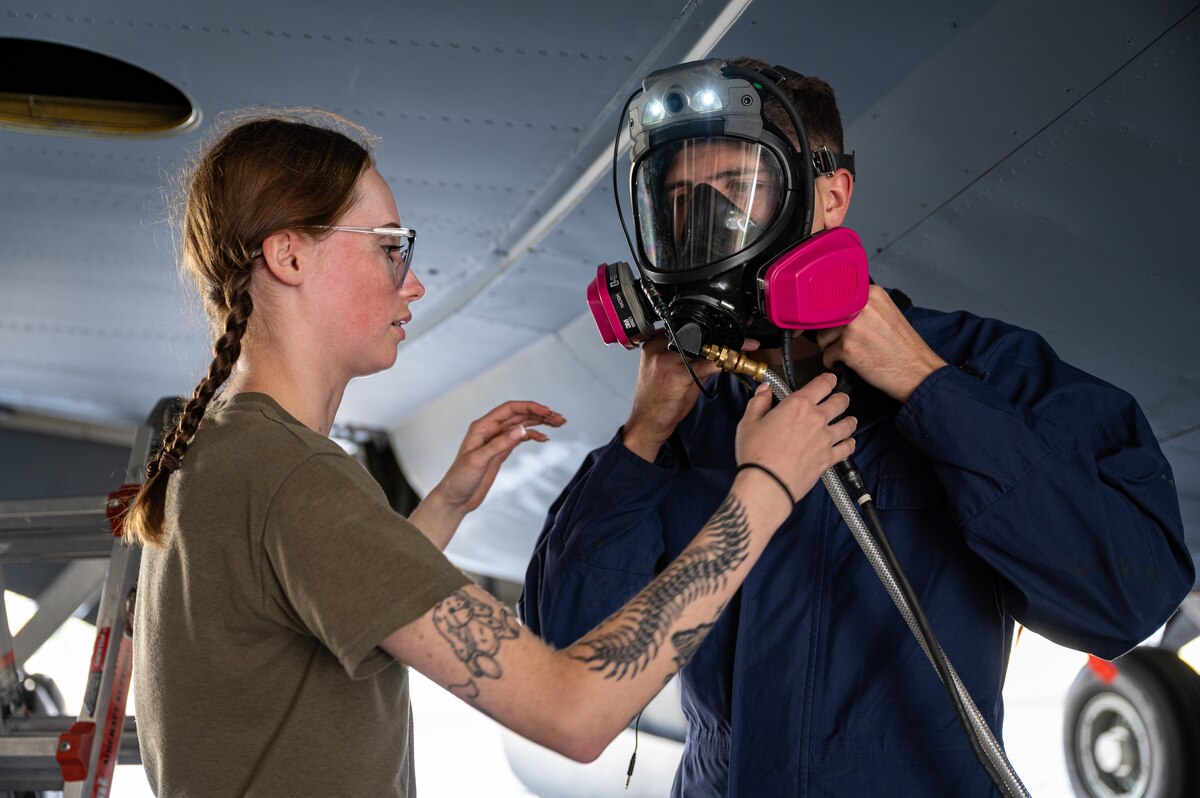 From left, U.S. Air Force Senior Airman Lillian Goll and Airman 1st Class William Brice, 100th Maintenance Squadron, prepare to demonstrate the Integrated Respirator Information System to base leadership at RAF Mildenhall, England, Sept. 2, 2025. The idea for the system was first developed by a team from 100th MXS and later advanced to compete in the 2019 Air Force’s Spark Tank innovation competition. (U.S. Air Force photo by Airman 1st Class Aidan Martínez)
From left, U.S. Air Force Senior Airman Lillian Goll and Airman 1st Class William Brice, 100th Maintenance Squadron, prepare to demonstrate the Integrated Respirator Information System to base leadership at RAF Mildenhall, England, Sept. 2, 2025. The idea for the system was first developed by a team from 100th MXS and later advanced to compete in the 2019 Air Force’s Spark Tank innovation competition. (U.S. Air Force photo by Airman 1st Class Aidan Martínez) 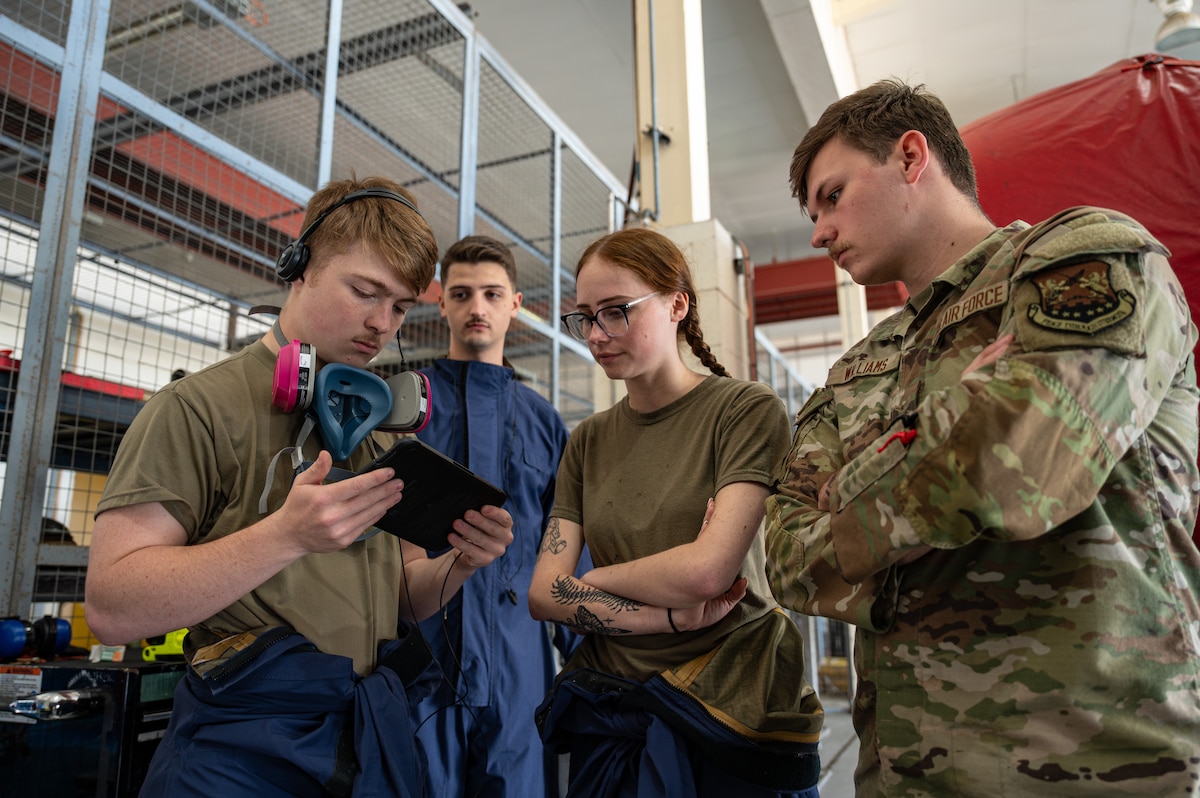 Airmen assigned to the 100th Maintenance Squadron prepare to use the Integrated Respirator Information System (IRIS) during a demonstration at RAF Mildenhall, England, Sept. 2, 2025. The IRIS has the potential to save more than 35,000 man hours annually on KC-135 aircraft maintenance. Additionally, the system could return about 7,000 days of aircraft availability each year. (U.S. Air Force photo by Airman 1st Class Aidan Martínez)
Airmen assigned to the 100th Maintenance Squadron prepare to use the Integrated Respirator Information System (IRIS) during a demonstration at RAF Mildenhall, England, Sept. 2, 2025. The IRIS has the potential to save more than 35,000 man hours annually on KC-135 aircraft maintenance. Additionally, the system could return about 7,000 days of aircraft availability each year. (U.S. Air Force photo by Airman 1st Class Aidan Martínez) 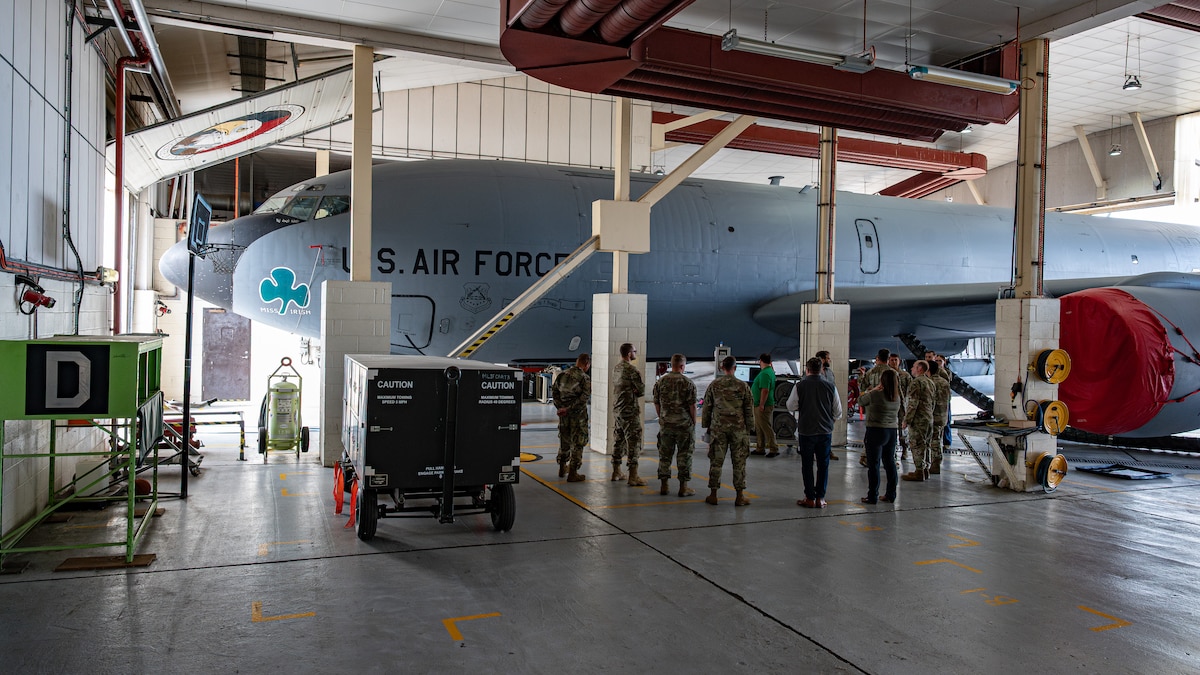 A group gathers next to a KC-135 Stratotanker from the 100th Air Refueling Wing during a demonstration of the Integrated Respirator Information System (IRIS) at RAF Mildenhall, England, Sept. 2, 2025. The IRIS went through years of testing to meet official safety standards, ensuring it was safe for use in fuel tanks and other areas with explosive vapors. (U.S. Air Force photo by Airman 1st Class Aidan Martínez)
A group gathers next to a KC-135 Stratotanker from the 100th Air Refueling Wing during a demonstration of the Integrated Respirator Information System (IRIS) at RAF Mildenhall, England, Sept. 2, 2025. The IRIS went through years of testing to meet official safety standards, ensuring it was safe for use in fuel tanks and other areas with explosive vapors. (U.S. Air Force photo by Airman 1st Class Aidan Martínez)









